
Do you have a question about the Panasonic LUMIX DMC-LZ8 and is the answer not in the manual?
| Brand | Panasonic |
|---|---|
| Model | LUMIX DMC-LZ8 |
| Category | Digital Camera |
| Language | English |
Steps for setting the clock for the first time.
How to view and modify the camera's date and time settings.
Explanation of different recording and playback modes.
How to access and select options within the camera menus.
Selecting the correct battery type and setting the current date/time.
Configuring world time, LCD brightness, and display modes.
Configuring audio feedback and display guidelines.
Setting exposure histograms, travel dates, and power saving features.
Adjusting how long captured images are displayed automatically.
Resetting file numbering, camera settings, and USB connection modes.
Configuring video output format and TV aspect ratio.
Setting display units, scene menu, and dial display options.
Instructions for formatting built-in memory or memory cards.
Icons and indicators shown during recording mode.
Icons and indicators shown during playback mode.
How to cycle through different display information options.
Understanding AF area detection and aperture value display.
How the camera adapts settings to subjects and lighting.
Camera features for optimizing sensitivity, focus, and stability.
How the flash operates and available settings in this mode.
Adjusting exposure for backlit subjects and understanding fixed settings.
Easily adjusting common settings without full menu access.
How the flash operates and available settings in Program AE mode.
Tips for dealing with dark images, exposure issues, and focus difficulties.
How lighting affects color and adjusting white balance for accurate colors.
Method for fixing focus and exposure on a specific subject.
Techniques and alerts for minimizing blur from movement.
How to zoom in and out, and understanding EZ zoom capabilities.
Table showing maximum zoom based on aspect ratio and picture size.
Explanation of the mechanism behind the extended optical zoom feature.
Quick access to zoom levels using the E.ZOOM button.
Steps to enable and use the digital zoom feature through the menu.
How to select, view, and navigate through pictures.
Method for quickly moving through playback content.
Steps to delete one picture at a time.
How to select and delete multiple or all stored pictures.
Options for customizing the data shown on the LCD screen.
How to use grid lines for better photo composition.
Using special modes to improve LCD visibility outdoors or for high angles.
Explanation of available flash modes like Auto, Red-eye, Forced On/Off.
Steps for changing the flash mode according to the scene.
Effective flash distance based on different ISO sensitivity settings.
Effective flash distance at different ISO limits.
Shutter speed variations for different flash modes.
Details on focusing distances and flash usage for close-up shots.
Steps for setting the self-timer and understanding the indicator.
How to adjust exposure value and understand its meaning.
How to use auto bracket and understand its icon.
Controlling depth of field by adjusting aperture.
Controlling motion blur by adjusting shutter speed.
Full manual control over aperture and shutter speed.
Using Portrait modes for people and low-light portraits.
Utilizing Scenery modes for landscapes and Sports modes for action.
Using Normal, Nature, Architecture, and Creative Scenery modes.
Utilizing Normal, Outdoor, Indoor, and Creative Sports modes.
Tips for photographing people in dark environments.
How to photograph night landscapes with slow shutter speeds.
How to select scene modes and understand their limitations.
Scene modes for specific environments and self-portraits.
Optimizing settings for sunsets and baby photos, including age/name entry.
Scene modes for pets, low light, beach, and night sky photography.
Scene modes for fireworks, snow scenes, and aerial views.
Adjusting video frame dimensions and quality settings.
Configuring home area and travel destination time settings.
Quickly adjusting common recording settings without full menu access.
Choosing image resolution and compression level.
Changing the image's aspect ratio for TVs or film format.
How the camera automatically adjusts ISO sensitivity.
Controlling light sensitivity for different shooting conditions.
Adjusting color tone to match lighting conditions.
Automatic color balance adjustment based on lighting.
Procedure for setting white balance manually using a reference.
Manually adjusting white balance for specific color tones.
Choosing how the camera measures light for exposure.
Selecting autofocus modes and understanding face detection.
Faster focusing using specific AF modes and Quick AF functionality.
Capturing multiple shots rapidly for action or sequences.
Applying artistic color styles to pictures.
Adjusting contrast, sharpness, saturation, and noise reduction.
How the image stabilizer compensates for jitter.
Setting the slowest acceptable shutter speed to prevent blur.
Using the AF assist lamp for focusing in low light.
How to switch between different screen layouts in multi playback.
Procedure for removing selected pictures during multi playback.
How to navigate the calendar and view pictures by date.
How to zoom in/out and move around the magnified image.
Options to exit zoom mode or delete images during viewing.
Finishing, pausing, adjusting volume, and navigating the slide show.
Applying visual effects like AUTO, NATURAL, SLOW, SWING, URBAN.
Configuring the length of the slide show and repeat playback.
How to select categories and search for pictures.
How to mark pictures as favorites and remove them.
Common playback functions for managing images.
Step-by-step guide for adding titles to single pictures.
Procedure for adding titles to multiple pictures.
Procedures for adding text to single or multiple pictures.
Demonstrates how to enter text characters using camera controls.
Configuring stamps for shooting date, age, travel date, and titles.
Steps to resize one or multiple pictures for file size reduction.
Steps to enlarge, select, and crop parts of an image.
Changing 16:9 pictures to 3:2 or 4:3 aspect ratios.
Rotating selected pictures by 90-degree increments.
Automatically displaying pictures in the correct orientation.
How to mark pictures as favorites and remove them.
Selecting print options like single, multi, or cancel.
Specifying number of prints, date printing, and paper size.
Procedure to remove all DPOF print settings.
Options for including the date on printed photos.
Steps to protect individual or multiple selected pictures.
Instructions for copying all pictures from internal memory to a card.
Instructions for copying pictures from a memory card to internal memory.
Steps for connecting the camera to Windows PCs for data transfer.
Steps for connecting the camera to Macintosh computers for data transfer.
How image files are organized into folders on memory cards.
Using Picture Transfer Protocol for connecting to PCs.
Procedure for printing a single selected picture via PictBridge.
Procedure for selecting multiple pictures for printing via PictBridge.
Steps for selecting and printing a single picture.
Steps for selecting multiple pictures for printing.
Configuring date printing, paper size, and page layout for printing.
Steps to connect the camera to a TV for viewing pictures and video.
Viewing still images directly from SD cards on compatible TVs.
Identification of icons related to recording mode and settings.
Displayed indicators after specific settings are applied.
Identification of icons related to playback mode and picture properties.
Advice on handling the camera to prevent damage.
Avoiding interference from electronic devices and chemical exposure.
How to clean and care for the camera.
Warnings about battery use, damage, and proper disposal.
Precautions for memory card care and safe tripod attachment.
Diagnosing and resolving issues with camera power and batteries.
Solutions for pictures not recording, being pale, or having incorrect exposure.
Addressing focus problems, blur from shake, and grainy images.
Resolving color discrepancies, motion picture recording faults, and LCD smear.
Solutions for LCD turning off, darkening, flickering, or showing dots.
Diagnosing why the flash may not activate or activates incorrectly.
Solutions for unexpected rotation, no playback, or incorrect file displays.
Addressing incorrect dates in playback and white spots in images.
Resolving issues with display on TV or uploading to computer.
Troubleshooting printer connections and other miscellaneous problems.
Troubleshooting AF lamp operation and camera warming.
Resolving clock resets, image distortion, and file number problems.
Technical details on shooting speed, sensitivity, and color settings.
Technical details on exposure, metering, display, and flash capabilities.
Details on image resolution, quality settings, and file formats.
Information on connectivity ports, dimensions, and mass.
Instructions for obtaining service within the US and Puerto Rico.
Details on what the warranty does not cover and consumer rights.
Important safety advice for fire, shock, and damage prevention.
Precautions for rechargeable batteries, adapters, and cables.
Details on photo management and editing software.
Information on media playback, PDF reading, and PC connection drivers.
Features of the photo acquisition and management software.
Overview of Medialmpression and Panorama Maker software.
Using QuickTime for playing audio and video files.
Requirement for viewing PDF manuals and instructions.
Installing the USB driver for Windows 98/98SE.
Recommended and custom installation procedures for Windows.
Steps for installing software on Macintosh systems.
Information on battery types and selection in the setup menu.
Explanations for LCD dimming, flickering, or turning off.
Warnings about using USB cables and normal camera warming.
Precautions for storing cameras in cars and card type recommendations.
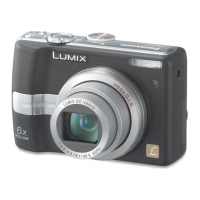
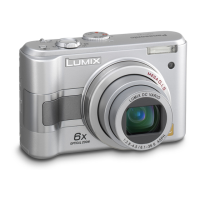
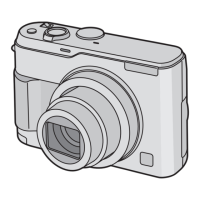
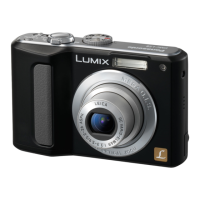
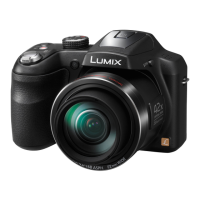

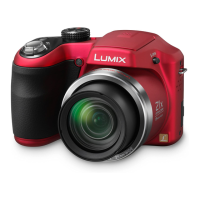
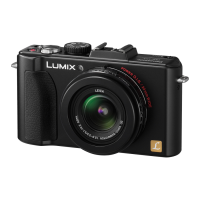
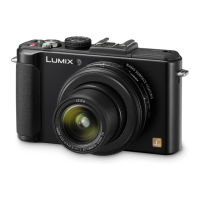
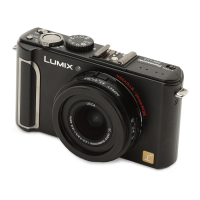
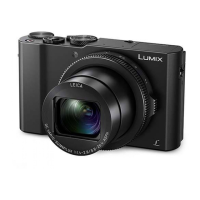
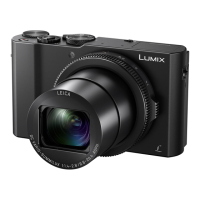
